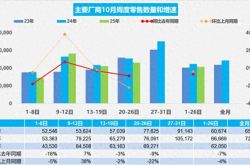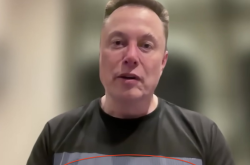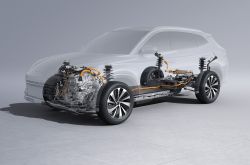The Dawn of Mass Production: Humanoid Robots Enter a Pivotal Phase of Industrial Chain Reconstruction
![]() 02/28 2025
02/28 2025
![]() 593
593
In an era marked by rapid technological advancements, we find ourselves amidst a landscape brimming with boundless potential. From smartphones democratizing information to artificial intelligence transforming work and life, each technological leap is profoundly altering the course of human development.
Robots, the culmination of cutting-edge technologies, are transitioning from the realm of science fiction into our daily lives. They symbolize not only technological progress but also herald a significant shift in future lifestyles and production methods, captivating global attention.
Recently, the robot industry has been abuzz with positive news. Horizon Robotics was included in the Hang Seng TECH Index, effective March 10, 2025, with its share price surging 34.57% over four consecutive days. UBTECH Robotics saw its target price skyrocket by over 100% to HK$142, earning the moniker of "the next Tesla" and logging a cumulative weekly increase of 24.51%. Prior to this, Unitree Robotics garnered significant market attention with its Unitree H1 robot, which made an appearance on the Spring Festival Gala.
Perhaps 2025 marks a pivotal moment for the humanoid robot industry.
What underpins the surge in humanoid robots, particularly UBTECH Robotics' breakthrough?
Currently, humanoid robots epitomize the pinnacle of artificial intelligence and high-end manufacturing, with their core competencies spanning motion control, environmental perception, and intelligent decision-making.
Take "TianGong Robotics," a major investment of UBTECH Robotics, as an example. Its ability to climb 134 outdoor stairs and achieve a maximum speed of 12 km/h sets new benchmarks in the industry, validating breakthroughs in bipedal motion technology. Furthermore, its next-generation industrial humanoid robot, Walker S2, is scheduled for mass production in the second quarter of 2025, anticipated to achieve significant advancements in core metrics such as joint lifespan and scene adaptability, solidifying UBTECH Robotics' foothold in industrial scenarios.
Turning to Unitree Robotics, its highly anticipated B2-W quadruped robot, released in December 2024, demonstrated exceptional performance in complex terrains, from executing backflips to carrying loads and performing "zero-frame handkerchief spinning."
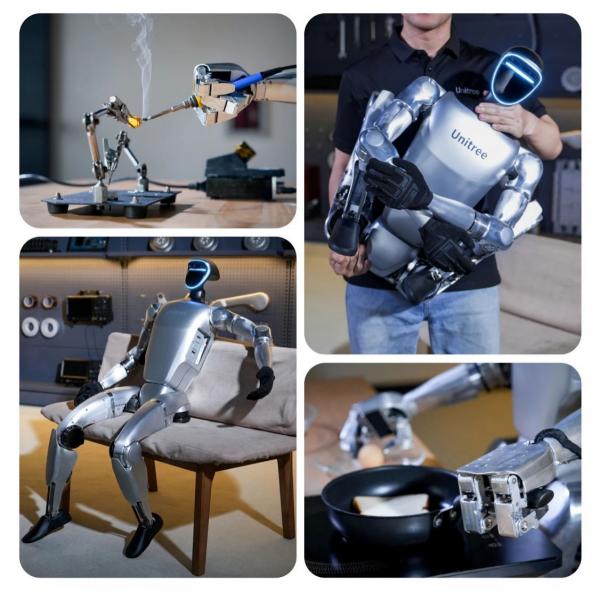
Image source: Unitree Robotics official
Evidently, technological breakthroughs and commercialization advancements are propelling the humanoid robot industry into a new era. Additionally, supportive policies and burgeoning market demand serve as catalysts for this explosion.
At the policy level, China classified humanoid robots as a strategic emerging industry in 2024. Since 2023, economically robust provinces and cities such as Shanghai, Shenzhen, and Guangdong have successively introduced support policies for the industry. Notably, the Beijing Robotics Industry Development Investment Fund boasts a scale of RMB 10 billion, with companies like Beijing Capital Holdings deeply investing in the industrial chain by funding Unitree Robotics, Galaxy General, and other unicorn companies.
Market demand is equally compelling. The aging population and rising labor costs are fueling substitution demand. According to GGII (Gao Gong Industry Research Institute) predictions, the market size of humanoid robots in China will reach RMB 2.158 billion in 2024 and nearly RMB 38 billion by 2030, with an average annual compound growth rate exceeding 61%. Annual sales of humanoid robots in China are projected to soar from approximately 4,000 units to 271,200 units.
UBTECH Robotics has witnessed a doubling of its target price by Citigroup. When compared to the valuation of Figure AI, a leading global humanoid robot company, at USD 39.5 billion, the growth premium space is substantial. Similarly, in just a few months, Unitree Robotics has achieved a valuation leap from RMB 8 billion to RMB 10 billion, reflecting the market's enthusiasm and recognition of the humanoid robot industry during its nascent "0 to 1" phase.
Both UBTECH Robotics and Unitree Robotics, while pursuing groundbreaking technological advancements, strive for a balance between technology and business, focusing on technology implementation and application scenario development. This pragmatic approach is gradually unlocking opportunities for the industry.
From "single-point breakthrough" to "full-chain collaboration," automobile factories have emerged as key testbeds.
With Tesla's FSD officially entering the domestic market and plans for Optimus mass production in 2025, these moves seem to expedite domestic advancements in advanced autonomous driving. However, they also open a direct pathway linking humanoid robots and the automotive industry. Like autonomous driving in automobiles, humanoid robots represent the fusion of artificial intelligence and robotics, with significant overlap in hardware and software systems.
Reflecting on the evolution of autonomous driving, humanoid robots, post-mass production, will require extensive data collection and training. They will continue to evolve from specialized to generalized applications, expanding from limited to universal scenarios, thereby enhancing their functionality and accelerating commercialization.
Automobile factories are undoubtedly pivotal application scenarios for humanoid robots. UBTECH Robotics has already collaborated with numerous automakers, including Dongfeng Liuzhou Automobile, Geely Automobile, Audi FAW, BYD, and BAIC BJEV, becoming the humanoid robot company with the most extensive factory training globally.
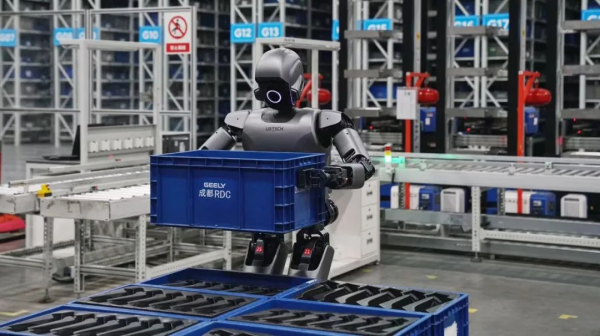
Image source: UBTECH Robotics official
To date, UBTECH Robotics' industrial humanoid robot Walker S has secured over 500 intent orders from automakers and is at a critical stage of industrialization.
Notably, in recent years, multiple automakers, led by Tesla, have actively ventured into the humanoid robot industry through self-research, collaboration, or investment.
In June 2024, Xiaomi began promoting the phased implementation of its humanoid robot CyberOne "Tie Da" on its manufacturing lines, marking a shift towards Tesla's robot "Optimus" industrial manufacturing approach. In November 2024, XPeng Motors unveiled its self-developed AI robot Iron, which will primarily be deployed in factory automation and store services, leveraging intelligent technology to enhance production efficiency and service quality.
Leading automaker BYD has also announced recruitment for intelligent research teams, expanding product teams for process robots, intelligent collaborative robots, intelligent mobile robots, and humanoid-like robots.
Given that humanoid robots drew inspiration from automobile design and manufacturing in their hardware and software systems, automakers can leverage their precision manufacturing expertise to replicate the production of robot joints, sensors, and other components, fostering synergy with humanoid robot technology and extending the automotive industry chain into the robot industry, unlocking new growth avenues.
Transitioning from "0 to 1" to reaching the critical point of scaling from "1 to N"
2025 is deemed the "first year of mass production" for humanoid robots, with products such as Tesla's Optimus, UBTECH Robotics' Walker S2, and Unitree Robotics' G1 entering the stage of large-scale delivery.
The core logic at this juncture is the convergence of technological maturity, industrial chain synergy, and exploding market demand, propelling the industry from "bonsai-style innovation" in laboratories to "forest-style expansion" in industrial scenarios. This leap necessitates not only breakthroughs in technology and cost but also the establishment of a comprehensive industrial ecosystem.
Regarding cost control, Musk has suggested that the selling price of humanoid robots could drop to USD 20,000-25,000 after reaching mass production of 1 million units, with costs falling below USD 20,000.
For domestic enterprises, domestic substitution is crucial for further cost reduction. Technology reuse is a key breakthrough for automakers. It is reported that if Tesla transfers flexible manufacturing technology from its automotive production lines to Optimus production, its manufacturing costs will be significantly reduced.
Moreover, the release of policy dividends and accelerated industry shuffling by capital have brought dual benefits. Goldman Sachs predicts that global humanoid robot shipments will reach 1.4 million units by 2035, with the market size surging from USD 6 billion to USD 38 billion.
Throughout 2024, the domestic humanoid robot sector witnessed 56 financing events, totaling over RMB 5 billion. For instance, automakers and battery giants such as BYD and CATL have invested in the robot sector through industry-investment funds, strengthening industrial chain synergy.
Policy-wise, China's Ministry of Industry and Information Technology's "Guidance on Innovative Development of Humanoid Robots" aims to break through key technologies in the "brain, cerebellum, and limbs" by 2025 and cultivate 2-3 global leaders. Simultaneously, the European Union has adopted the "Artificial Intelligence Act," establishing safety standards for humanoid robots and mandating "ethical risk assessments."
In conclusion, the critical point of scaling humanoid robots is a multifaceted endeavor encompassing technology, the industrial chain, policies, and society. In 2025, with mass production and cost reduction, the industry will embark on a period of explosive growth from "1 to N." However, addressing technological long tails, supply chain security, and ethical controversies will require sustained efforts.
In the coming decade, humanoid robots may transform into infrastructure reshaping production and life, akin to smartphones. Whether Chinese enterprises can replicate the success of new energy vehicles will hinge on the speed of breakthroughs in hard technology and ecosystem construction.
Source: HK Stocks Research



